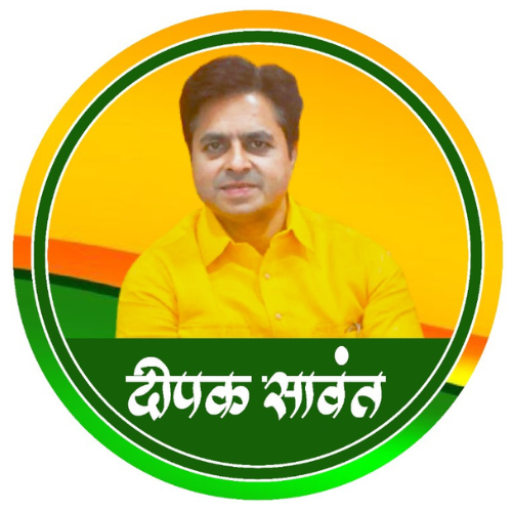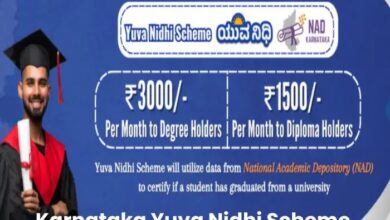Krishna Janmashtami 2025: Date, Auspicious Timings, Puja Rituals, Significance & Complete Guide

Krishna Janmashtami, one of the most vibrant and spiritually significant Hindu festivals, celebrates the divine birth of Lord Krishna, the eighth incarnation of Lord Vishnu. Revered as the embodiment of love, wisdom, and righteousness, Krishna’s life and teachings continue to inspire millions worldwide. In 2025, Krishna Janmashtami promises to be a grand celebration filled with devotion, fasting, and joyous festivities. This comprehensive guide covers the date, auspicious timings, puja rituals, spiritual significance, and everything you need to know to celebrate Krishna Janmashtami 2025 with devotion and fervor.
{tocify} $title={Table of Contents}
Date of Krishna Janmashtami 2025
Krishna Janmashtami is observed on the eighth day (Ashtami Tithi) of the dark fortnight (Krishna Paksha) in the month of Bhadrapada, as per the Hindu lunar calendar. In 2025, the festival will primarily be celebrated on Saturday, August 16, though some regions, particularly those following Smarta traditions, may observe it on Friday, August 15. The two-day celebration arises due to the overlap of the Ashtami Tithi and Rohini Nakshatra, which are significant for determining the exact date. Most Vaishnava communities and ISKCON followers will celebrate on August 16, based on the Udaya Tithi (morning tithi) principle.
 |
| Krishna Janmashtami 2025 |
Krishna Janmashtami 2025 Highlights
| Event | Krishna Janmashtami 2025 |
|---|---|
| Date | Primarily Saturday, August 16, 2025; some regions (Smarta tradition) may observe on Friday, August 15, 2025 based on Udaya Tithi and Rohini Nakshatra alignment. |
| Ashtami Tithi Timings | Begins: 11:49 PM on August 15, 2025 Ends: 9:34 PM on August 16, 2025 |
| Nishita Puja Muhurat | 12:04 AM to 12:47 AM on August 16, 2025 (43-minute window for midnight puja) |
| Midnight Birth Moment | Approximately 12:25 AM on August 16, 2025 |
| Parana (Fast-Breaking) | After 9:34 PM on August 16, 2025, or after 5:50 AM on August 17, 2025 (varies by tradition) |
| Rohini Nakshatra Timings | Begins: 4:38 AM on August 17, 2025 Ends: 3:17 AM on August 18, 2025 |
| Chandrodaya (Moonrise) | 10:47 PM or 11:19 PM on August 16, 2025 (varies by source/location) |
| Types of Fasting |
Nirjala Vrat: No food or water until midnight Phalahar Vrat: Fruits, milk, curd, water; no grains, onion, garlic Satvik Vrat: One light vegetarian meal without grains |
| Essential Puja Samagri | Idol/picture of Krishna, cradle, panchamrit, tulsi, butter, mishri, fruits, sweets, incense, diyas, camphor, bells, conch, yellow cloth, sandalwood paste, Ganga water |
| Do’s |
Wear yellow/saffron clothes Chant mantras, read Bhagavad Gita Offer sattvic bhog, perform charitable acts Involve children in bhajans, cradle decoration |
| Don’ts |
Avoid grains, onion, garlic, non-vegetarian food, alcohol Refrain from negative thoughts or impure actions Do not consume food/water before parana (for Nirjala Vrat) |
Auspicious Timings for Krishna Janmashtami 2025
The most sacred moment of Janmashtami is the midnight hour, believed to be when Lord Krishna was born in a Mathura prison to Devaki and Vasudeva. The Ashtami Tithi and Rohini Nakshatra alignments are critical for performing the puja at the right time. Below are the key timings for Krishna Janmashtami 2025 (all times are approximate and may vary by location, so consult a local panchang for precision):
- Ashtami Tithi Begins: 11:49 PM on August 15, 2025
- Ashtami Tithi Ends: 9:34 PM on August 16, 2025
- Nishita Puja Muhurat (Midnight Puja): 12:04 AM to 12:47 AM on August 16, 2025 (43-minute window)
- Midnight Birth Moment: Approximately 12:25 AM on August 16, 2025
- Parana (Fast-Breaking Time): After 9:34 PM on August 16, 2025, or after 5:50 AM on August 17, 2025, depending on regional traditions
- Chandrodaya Moment (Moonrise): 10:47 PM or 11:19 PM on August 16, 2025 (varies by source)
- Rohini Nakshatra Begins: 4:38 AM on August 17, 2025
- Rohini Nakshatra Ends: 3:17 AM on August 18, 2025
The Nishita Puja Muhurat is the most auspicious time for performing the midnight worship, as it aligns with Krishna’s birth under the Rohini Nakshatra. Devotees should plan their rituals accordingly, ensuring they are in a state of purity and devotion during this sacred window.
Puja Rituals for Krishna Janmashtami 2025
Krishna Janmashtami is marked by elaborate rituals, fasting, and devotional practices that honor Lord Krishna’s divine birth. Below is a detailed guide to performing the puja, suitable for both home and temple celebrations.
Pre-Vrat Preparations
- Clean the Home: Thoroughly clean the house and puja area to create a pure environment.
- Decorate the Puja Space: Adorn the puja area with rangoli, fresh flowers, peacock feathers, diyas, and lights. Set up a small cradle or jhula for the idol of Bal Gopal (infant Krishna).
- Gather Puja Samagri: Essential items include an idol or picture of Lord Krishna, panchamrit (milk, curd, ghee, honey, sugar), tulsi leaves, butter, mishri, fruits, milk-based sweets (kheer, pedha, ladoo), incense sticks, camphor, diyas, bells, conch, yellow cloth, sandalwood paste, and Ganga water.
Types of Fasting (Vrat)
Devotees observe a fast to purify the body and mind, dedicating the day to Krishna’s worship. The types of fasts include:
- Nirjala Vrat: A strict fast without food or water until midnight, suitable for advanced practitioners.
- Phalahar Vrat: A lighter fast allowing fruits, milk, curd, cottage cheese, and water. Avoid grains, onion, garlic, and regular salt (use rock salt instead).
- Satvik Vrat: One light vegetarian meal without grains, onion, or garlic, focusing on purity.
Morning Rituals
- Wake Up Early: Rise during Brahma Muhurta (4:00 AM–6:00 AM), take a bath, and wear clean clothes, preferably yellow or saffron, which are associated with Krishna.
- Take Sankalpa: Make a vow to observe the fast with devotion by chanting, “Om Krishnaya Namaha, I undertake this sacred fast in devotion to Lord Krishna.”
- Chant Mantras: Recite mantras like “Om Namo Bhagavate Vasudevaya” (108 times), Vishnu Sahasranama, or Krishna Ashtakam. Reading excerpts from the Bhagavad Gita (Chapters 2, 12, or 18) is also recommended.
- Set Up the Altar: Place the idol of Bal Gopal on a decorated platform with a yellow cloth. Draw small footprints (charan chinha) symbolizing Krishna’s arrival. Install a kalash representing Goddess Devaki.
Daytime Observance
- Devotional Activities: Engage in bhajans, kirtans, or reading Krishna Leela stories from the Srimad Bhagavatam. Popular stories include Krishna’s butter-stealing antics, his lifting of Govardhan Hill, or his divine play with the gopis.
- Prepare Bhog: Offer sattvic foods like makhan-mishri (butter with sugar), panchamrit, kheer, pedha, and fruits. Tulsi leaves are mandatory in offerings, as Krishna accepts them with love.
- Community Participation: Visit temples, participate in jhanki (tableaux) depicting Krishna’s life, or engage in charitable acts like feeding the poor or donating to temples.
Midnight Puja (Nishita Kaal)
The midnight puja is the highlight of Janmashtami, commemorating Krishna’s birth. Follow these steps:
- Abhishek (Bathing the Idol): Bathe the idol of Bal Gopal with panchamrit and clean water, chanting “Om Namo Bhagavate Vasudevaya.”
- Dress the Idol: Adorn Krishna with new clothes, jewelry, and a peacock feather crown.
- Offer Bhog: Present butter, mishri, fruits, sweets, and tulsi leaves. Popular offerings include panjiri, dhaniya panjiri, and makhana kheer.
- Perform Shodashopachara Puja: This 16-step worship includes invoking Krishna, offering a seat, washing his feet, offering water, clothes, sandalwood paste, flowers, incense, lamps, food, betel leaf, dakshina, circumambulation, prostration, and aarti.
- Chant Mantras: Recite “Om Devaki Suta Govinda Vasudeva Jagat Pate, Dehi Me Tanayam Krishna Tvamaham Sharanam Gata Hai” or the Hare Krishna Maha Mantra: “Hare Krishna Hare Krishna, Krishna Krishna Hare Hare, Hare Rama Hare Rama, Rama Rama Hare Hare.”
- Aarti and Celebration: Perform aarti with camphor, ring bells, blow the conch, and shower flower petals. Rock the cradle gently while singing bhajans like “Achyutam Keshavam” or “Govind Bolo Hari Gopal Bolo.” Announce “Krishna Janma” at midnight to mark the divine birth.
Breaking the Fast (Parana)
- Break the fast after the midnight puja (around 12:47 AM on August 16) or on August 17 after 5:50 AM, depending on local customs.
- Consume prasad (offered sweets, fruits, or panchamrit) and share it with family and neighbors to spread Krishna’s blessings.
Post-Janmashtami Celebrations
- Dahi Handi (August 16, 2025): In Maharashtra, teams of young men form human pyramids to break a pot filled with curd or butter, reenacting Krishna’s playful butter-stealing adventures. Mumbai, Pune, and Thane host vibrant Dahi Handi competitions.
- Nandotsav (August 17, 2025): Celebrated in places like Nandgaon and Vrindavan, this festival honors Krishna’s foster parents, Nand Baba and Yashoda, with feasts and joyous gatherings.
Spiritual Significance of Krishna Janmashtami
Krishna Janmashtami holds profound spiritual and cultural importance, symbolizing the triumph of good over evil and the power of divine love. Here are the key aspects of its significance:
Victory of Good Over Evil: Lord Krishna was born to end the tyranny of King Kansa, his maternal uncle, who terrorized Mathura. Krishna’s birth in a prison, his miraculous escape to Gokul, and his eventual defeat of Kansa represent the eternal victory of righteousness (dharma) over unrighteousness (adharma).
Divine Love and Bhakti: Krishna’s life—from his playful childhood as Makhan Chor to his divine romance with Radha and his profound teachings in the Bhagavad Gita—embodies selfless love and devotion. Janmashtami encourages devotees to cultivate bhakti (devotion) and surrender to Krishna’s divine will.
Spiritual Awakening: The midnight birth of Krishna symbolizes the awakening of divine consciousness within the devotee. Fasting, chanting, and worship during Janmashtami purify the mind and heart, helping devotees transcend material desires and connect with the divine.
Timeless Wisdom of the Bhagavad Gita: Krishna’s teachings in the Bhagavad Gita, delivered to Arjuna on the battlefield of Kurukshetra, offer universal guidance on karma yoga (selfless action), bhakti yoga (devotion), and jnana yoga (knowledge). Janmashtami is an ideal time to reflect on these teachings and apply them to daily life.
Astrological Potency: The alignment of Ashtami Tithi and Rohini Nakshatra creates a spiritually potent period for mantra chanting, meditation, and sadhana. Devotees believe that worship during this time brings blessings for prosperity, peace, and liberation (moksha).
The Legend of Krishna Janmashtami
Krishna Janmashtami commemorates the divine birth of Lord Krishna, the eighth avatar of Lord Vishnu, born to restore dharma (righteousness) and vanquish evil. The legend, rooted in the Srimad Bhagavatam, unfolds in Mathura, where the tyrannical King Kansa ruled with cruelty. A divine prophecy foretold that Kansa would be killed by the eighth child of his sister, Devaki, and her husband, Vasudeva. Enraged, Kansa imprisoned the couple and killed their first six newborns.
When Devaki conceived her seventh child, Lord Vishnu miraculously transferred the embryo to Rohini, Vasudeva’s other wife in Gokul, where it was born as Balarama. For the eighth child, Vishnu himself incarnated as Krishna. On the night of Krishna’s birth, during the Ashtami Tithi of Bhadrapada under the Rohini Nakshatra, a divine intervention occurred. The prison guards fell asleep, the chains broke, and the doors opened. Guided by divine will, Vasudeva carried newborn Krishna across the raging Yamuna River in a basket, shielded by the serpent Sheshnag. He reached Gokul, where he exchanged Krishna with the newborn daughter of Nand Baba and Yashoda.
Kansa, upon discovering the infant girl, attempted to kill her, but she transformed into Goddess Durga, warning him of his inevitable doom. Raised in Gokul, Krishna grew up as a playful yet divine child, eventually slaying Kansa and fulfilling the prophecy. Janmashtami celebrates this miraculous birth, symbolizing the triumph of good over evil and the divine love of Krishna.
Regional Celebrations of Krishna Janmashtami
Krishna Janmashtami is celebrated with unique traditions across India, reflecting the diversity of Krishna’s worship:
- Mathura and Vrindavan (Uttar Pradesh): The birthplace of Krishna, Mathura, and the nearby Vrindavan host grand celebrations at Shri Krishna Janmabhoomi Temple and ISKCON Vrindavan. Devotees perform abhishekam, Ras Leela performances, and continuous bhajans.
- Dwarka (Gujarat): The Dwarkadhish Temple, believed to be Krishna’s kingdom, witnesses elaborate pujas, lamp offerings, and spiritual discourses.
- Maharashtra: Dahi Handi events dominate in Mumbai, Pune, and Thane, with vibrant competitions and cultural programs.
- Gujarat: Devotees perform Garba and Dandiya Raas, celebrating Krishna’s divine love with the gopis.
- South India: Temples like Udupi Sri Krishna Matha in Karnataka host grand processions, cultural performances, and special pujas.
- West Bengal: Devotees focus on bhakti through kirtans, jhulan yatra (swing festivals), and temple decorations.
Tips for a Fulfilling Janmashtami Celebration
- Involve Children: Dress kids as Krishna or Radha, teach them simple bhajans, or involve them in decorating the cradle or drawing Krishna’s stories.
- Chant Mantras: Recite “Hare Krishna Hare Krishna, Krishna Krishna Hare Hare, Hare Rama Hare Rama, Rama Rama Hare Hare” or “Shri Krishna Sharanam Mama” for spiritual growth.
- Maintain Purity: Avoid grains, lentils, onion, garlic, non-vegetarian food, alcohol, and negative thoughts during the fast.
- Visit Temples: If possible, visit sacred sites like Mathura, Vrindavan, or Dwarka for a divine experience.
- Charity and Service: Donate food, clothes, or money to the needy, as acts of kindness align with Krishna’s teachings.
Conclusion
Krishna Janmashtami 2025 is a divine opportunity to immerse oneself in the love, wisdom, and playfulness of Lord Krishna. By observing the fast, performing the midnight puja, and engaging in devotional activities, devotees can seek blessings for prosperity, happiness, and spiritual growth. Whether celebrating at home with a simple puja or joining grand festivities in temples like Mathura and Vrindavan, the essence of Janmashtami lies in surrendering to Krishna’s divine grace. Let this festival inspire you to embrace righteousness, devotion, and the eternal teachings of the Bhagavad Gita.
FAQs: Krishna Janmashtami 2025
Q. When is Krishna Janmashtami 2025?
Krishna Janmashtami 2025 will primarily be celebrated on Saturday, August 16, though some regions, particularly Smarta tradition followers, may observe it on Friday, August 15. The date depends on the Ashtami Tithi and Rohini Nakshatra alignment, with August 16 being the main day for most Vaishnava communities and ISKCON followers, based on the Udaya Tithi principle.
Q. What are the auspicious timings for Krishna Janmashtami 2025?
The key timings for Krishna Janmashtami 2025 are (approximate, consult a local panchang for precision):
- Ashtami Tithi Begins: 11:49 PM on August 15, 2025
- Ashtami Tithi Ends: 9:34 PM on August 16, 2025
- Nishita Puja Muhurat (Midnight Puja): 12:04 AM to 12:47 AM on August 16, 2025
- Midnight Birth Moment: Approximately 12:25 AM on August 16, 2025
- Parana (Fast-Breaking Time): After 9:34 PM on August 16 or after 5:50 AM on August 17, 2025
- Chandrodaya (Moonrise): 10:47 PM or 11:19 PM on August 16, 2025 (varies by source)
- Rohini Nakshatra Begins: 4:38 AM on August 17, 2025
- Rohini Nakshatra Ends: 3:17 AM on August 18, 2025
The Nishita Puja Muhurat is the most sacred time for worship, marking Lord Krishna’s birth.
Q. Why is Krishna Janmashtami celebrated over two days?
The festival may span two days due to the overlap of the Ashtami Tithi and Rohini Nakshatra in the Hindu lunar calendar. Different traditions (Vaishnava vs. Smarta) prioritize either the tithi or nakshatra, leading to variations in the date. In 2025, Vaishnava followers and ISKCON typically celebrate on August 16, while some Smarta communities may observe it on August 15.
Q. What types of fasts are observed on Krishna Janmashtami?
Devotees observe different types of fasts based on their capacity and tradition:
- Nirjala Vrat: A strict fast without food or water until midnight, ideal for advanced practitioners.
- Phalahar Vrat: A lighter fast allowing fruits, milk, curd, cottage cheese, and water; avoids grains, onion, garlic, and regular salt (use rock salt).
- Satvik Vrat: One light vegetarian meal without grains, onion, or garlic, maintaining purity.
Q. What are the essential rituals for Krishna Janmashtami puja?
The key rituals include
- Morning Preparations: Wake up during Brahma Muhurta (4:00 AM–6:00 AM), bathe, wear clean clothes (preferably yellow/saffron), and take a sankalpa (vow) for the fast.
- Setup: Clean the puja area, decorate with rangoli, flowers, and a cradle for Bal Gopal. Draw Krishna’s footprints and set up a kalash for Goddess Devaki.
- Daytime Devotion: Chant mantras like “Om Namo Bhagavate Vasudevaya” or the Hare Krishna Maha Mantra, read the Bhagavad Gita, and prepare sattvic bhog (butter, mishri, kheer, fruits).
- Midnight Puja (Nishita Kaal): Perform abhishekam with panchamrit, dress the idol, offer bhog, chant mantras, and perform aarti. Rock the cradle while singing bhajans.
- Breaking the Fast: Consume prasad after the midnight puja or on August 17 after 5:50 AM, depending on tradition.
Q. What items are needed for the Janmashtami puja?
Essential puja samagri includes:
- Idol or picture of Lord Krishna
- Cradle or jhula for Bal Gopal
- Panchamrit (milk, curd, ghee, honey, sugar)
- Tulsi leaves, fresh flowers, peacock feathers
- Butter, mishri, fruits, milk-based sweets (kheer, pedha, ladoo)
- Incense sticks, diyas, camphor, bells, conch
- Yellow/white cloth, sandalwood paste, Ganga water, black sesame seeds
Q. What foods can be offered as bhog to Lord Krishna?
Lord Krishna is fond of dairy-based offerings. Common bhog items include:
- Makhan-mishri (butter with sugar)
- Panchamrit
- Milk-based sweets like kheer, pedha, barfi, or ladoo
- Panjiri, dhaniya panjiri, or makhana kheer
- Fruits and tulsi leaves (mandatory)
- Avoid grains, onion, garlic, and non-vegetarian items, as the offerings should be sattvic.
Q. What is the Dahi Handi celebration, and when does it occur?
Dahi Handi is a popular event, especially in Maharashtra, where teams form human pyramids to break a pot filled with curd or butter, reenacting Krishna’s playful butter-stealing antics. In 2025, it will be celebrated on August 16, particularly in cities like Mumbai, Pune, and Thane, with vibrant competitions and cultural programs.
Q. What is Nandotsav, and when is it celebrated?
Nandotsav is celebrated the day after Janmashtami to honor Krishna’s foster parents, Nand Baba and Yashoda. It involves feasts, bhajans, and joyous gatherings, particularly in places like Nandgaon and Vrindavan. In 2025, Nandotsav will be observed on August 17.
Q. Which mantras should be chanted during Janmashtami?
Key mantras to chant include:
- Hare Krishna Maha Mantra: “Hare Krishna Hare Krishna, Krishna Krishna Hare Hare, Hare Rama Hare Rama, Rama Rama Hare Hare”
- Krishna Invocation Mantra: “Om Devaki Suta Govinda Vasudeva Jagat Pate, Dehi Me Tanayam Krishna Tvamaham Sharanam Gata Hai”
- Simple Mantra: “Om Namo Bhagavate Vasudevaya” or “Shri Krishna Sharanam Mama”
- Chanting these 108 times during the puja enhances spiritual benefits.
Q. What should be avoided during the Janmashtami fast?
To maintain purity, avoid:
- Grains, lentils, onion, garlic, and regular salt (use rock salt).
- Non-vegetarian food, alcohol, and processed foods.
- Negative thoughts, anger, or impure actions.
- Consuming food or water before breaking the fast (for Nirjala Vrat).
Q. Where are the major Janmashtami celebrations held in India?
Prominent locations include:
Mathura and Vrindavan (Uttar Pradesh):
- Shri Krishna Janmabhoomi Temple and ISKCON Vrindavan host grand pujas, abhishekam, and Ras Leela.
- Dwarka (Gujarat): Dwarkadhish Temple celebrates with lamp offerings and discourses.
- Udupi (Karnataka): Sri Krishna Matha organizes processions and cultural events.
- Mumbai, Pune, and Thane (Maharashtra): Famous for Dahi Handi competitions.
- West Bengal and Odisha: Focus on bhakti through kirtans and jhulan yatra.
{
“@context”: “https://schema.org”,
“@type”: “FAQPage”,
“mainEntity”: [{
“@type”: “Question”,
“name”: “Q. When is Krishna Janmashtami 2025?”,
“acceptedAnswer”: {
“@type”: “Answer”,
“text”: “Krishna Janmashtami 2025 will primarily be celebrated on Saturday, August 16, though some regions, particularly Smarta tradition followers, may observe it on Friday, August 15. The date depends on the Ashtami Tithi and Rohini Nakshatra alignment, with August 16 being the main day for most Vaishnava communities and ISKCON followers, based on the Udaya Tithi principle.”
}
},{
“@type”: “Question”,
“name”: “Q. What are the auspicious timings for Krishna Janmashtami 2025?”,
“acceptedAnswer”: {
“@type”: “Answer”,
“text”: “The key timings for Krishna Janmashtami 2025 are (approximate, consult a local panchang for precision):
Ashtami Tithi Begins: 11:49 PM on August 15, 2025
Ashtami Tithi Ends: 9:34 PM on August 16, 2025
Nishita Puja Muhurat (Midnight Puja): 12:04 AM to 12:47 AM on August 16, 2025
Midnight Birth Moment: Approximately 12:25 AM on August 16, 2025
Parana (Fast-Breaking Time): After 9:34 PM on August 16 or after 5:50 AM on August 17, 2025
Chandrodaya (Moonrise): 10:47 PM or 11:19 PM on August 16, 2025 (varies by source)
Rohini Nakshatra Begins: 4:38 AM on August 17, 2025
Rohini Nakshatra Ends: 3:17 AM on August 18, 2025
The Nishita Puja Muhurat is the most sacred time for worship, marking Lord Krishna’s birth.”
}
}]
}
Source link




